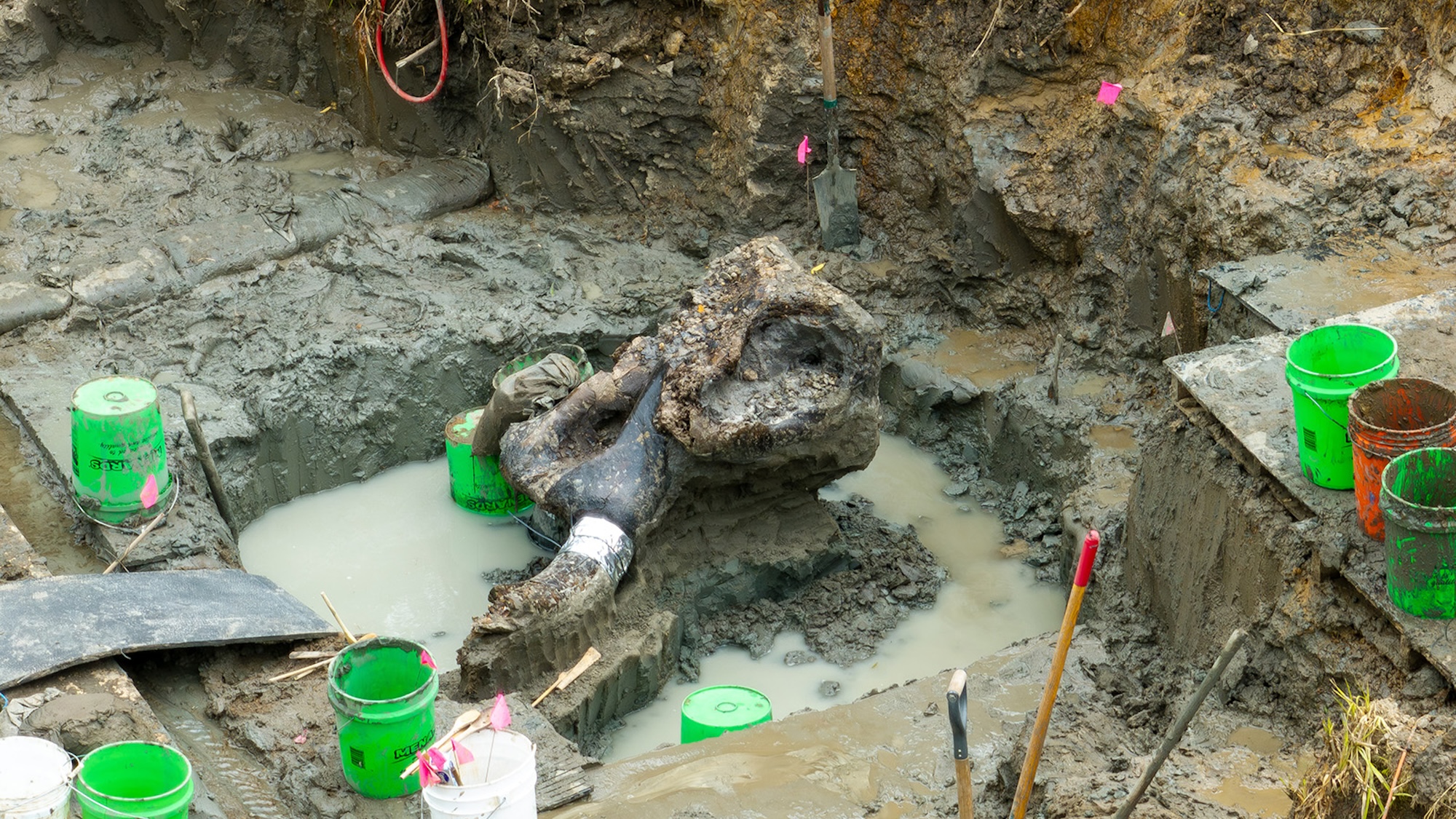Archeologists at the University of Iowa have revealed a first-ever find for the state: the region’s first-ever scientifically recovered mastodon skull. And experts believe there’s a chance ancient humans are responsible for its demise.
While the mastodon’s modern descendents can only be found in the wild across regions of Asia and Africa, multiple mastodon and mammoth species stomped across wide stretches of North America between roughly 3.5 million and 10,500 years ago. The giant Mammuthus columbi, for example, migrated as far south as central Mississippi until its eventual extinction around 12,700 BCE. The mastodon’s home, in comparison, included what is now Iowa. Well-preserved remains, however, were a rare find there—until an unusual discovery two years ago in one of the state’s least populated areas, according to an August 16 announcement from the University of Iowa.


Credit: University of Iowa / Kirk Murray
In 2022, a resident of Wayne County located on the Iowa-Missouri border was strolling along a local creekbed when they noticed a noticeably large bone half-buried in the ground. State archeologists soon determined it to be a mastodon femur. With a bit more excavation, they also found a broken tusk nearby with clear evidence that it wasn’t alone. In fact, it appeared to be still connected to the mastodon’s skull.

After two years of grant applications and donation solicitations, the University of Iowa Office of the State Archeologist (OSA) returned to the bones in August 2024 to begin retrieving the remains. Along with the femur and extremely well-preserved tusk and skull, researchers recovered a number of additional mastodon bones over the 12 day project, all of which are believed to belong to a single animal. Subsequent radiocarbon dating indicates the creature roamed ancient Wayne County approximately 13,600 years ago. This makes it particularly significant, not only for being a first-of-its-kind find in Iowa, but because the mastodon’s age overlaps with when humans already lived in the same area.


“We’re really hoping to find evidence of human interaction with this creature—perhaps the projectile points and knives that were used to kill the animal and do initial butchering,” John Doershuk, director and state archeologist at the OSA, said through the university announcement. Doershuk explained they may soon find evidence on the bones in the form of cut marks.
[Related: Man finds gigantic mammoth tusk in a Mississippi creek.]
Doershuk’s team noted it did find multiple human-made artifacts including stone tools, although these particular finds dated a few thousand years after this particular mastodon. Still, these relics are the first evidence of a human presence in the creek drainage. With additional study of aspects like specific bone locations and orientations, archeologists hope to learn more about the mastodon’s presence in Iowa, as well as how it possibly ended up in the creek bed in the first place. Meanwhile, colleagues at UI’s Paleontology Repository will work on conservation efforts before the mastodon ultimately moves to the Prairie Trails Museum in Corydon, Iowa. Once there, visitors will be able to see the ancient remains in person.

